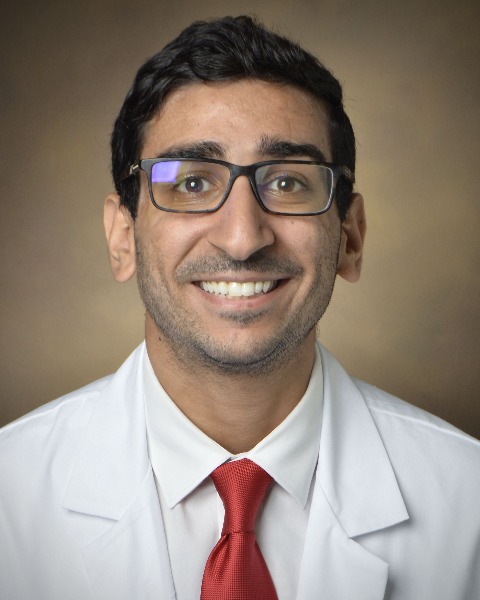A41: Q&A

David Hanna, MD
Resident Physician
Vanderbilt University Medical Center
Nashville, Tennessee, United StatesDisclosure: I do not have any relevant financial / non-financial relationships with any proprietary interests.
Abstract Presenter(s)
Methods:
We performed a multicenter retrospective review of a prospectively maintained database of patients who underwent CRS-HIPEC for moderately or poorly differentiated AC between 2013 – 2019. Patients in the total neoadjuvant therapy group (TNT) received 12 cycles of preoperative chemotherapy. Patients in the “sandwich group” (SAND) received 6 cycles of preoperative chemotherapy with intention to treat with maximum 6 cycles of postoperative chemotherapy based on the electronic health record. The primary outcomes were overall survival (OS) and recurrence-free survival (RFS), as defined as months from date of first treatment or surgery, respectively.
Results: A total of 39 patients were included in this analysis, with 25 (64%) patients in the TNT group and 14 (36%) patients in the SAND group, 2 (14%) of whom did not receive adjuvant chemotherapy. The median number of adjuvant chemotherapy cycles in the SAND group was 4.5. There were no significant differences in baseline characteristics between the two groups. Patients in the TNT group had a median overall survival of 62 months, while median overall survival in the SAND group was 45 months (p= 0.01). Additionally, patients in the TNT group had significantly longer RFS compared to the SAND group (35 vs 12 months, p=0.03). In a multivariate analysis, TNT approach was independently associated with improved OS [HR 3.3, 95%CI (1.4-5.1); p=0.01] and RFS [HR 4.4, 95%CI (1.9-6.8); p=0.007].
Conclusions: In this multicenter retrospective analysis, a TNT approach was associated with improved overall and recurrence-free survival compared to a sandwiched chemotherapy approach in patients undergoing CRS-HIPEC for moderately or poorly differentiated AC.
Learning Objectives:
- describe two distinct systemic chemothrapy treatment approaches for patients undergoing cytoreductive surgery with hyperthermic intraperitoneal chemotherapy for peritoneal carcinomatosis due to appendiceal adenocarcinoma.
- understand the oncologic outcomes seen in different systemic chemotherapuetic approaches for patients with appendiceal adenocarcinoma peritoneal metastases undergoing cytoreductive surgery with hyperthermic intraperitoneal chemotherapy
- demonstrate that a total neoadjuvant chemotherapy approach is associated with improved overall and recurrence-free survial when compared to a sandwich chemotherapy approach in patients with appendiceal adenocarcinoma peritoneal metastases.
